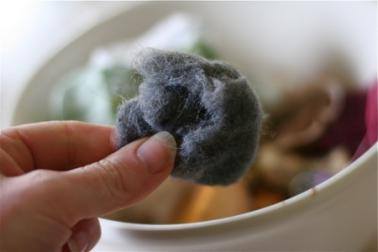
By Dan Shapley
New research calls into question the recommendation to compost lint. Why? The lint from laundering synthetic fabrics, like polyester, produces synthetic lint, and at least one researcher worries that it''s only a matter of time before health risks from exposure are identified.
Mark Browne, a post-doc fellow at University College Dublin, didn''t stu dy composted lint. He studied ocean pollution. He set out to learn more about how tiny bits of plastic pollution form and get distributed around the world. We''ve heard a lot about the Great Pacific Garbage Patch and other accumulations of large plastic debris, but Browne wanted to learn more about the fate of the nearly invisible majority of plastic pollution, the 65% of it that measures less than 1-millimeter in diameter.
He found that this micro-plastic pollution primarily accumulates near cities, rather than being caught in ocean currents and carried around the world. He found that most of it is polyester (or at least most of what he could measure, since he acknowledges that it''s likely certain types of plastic, like the scrubbing particles added to some cleaning agents and personal care products, would have escaped his detection methods). And he found that pollution levels spike outside of sewage outfalls. That led him to check a typical load of laundry, and he found that washing a fleece could produce nearly 2,000 micro-fibers of plastic pollution. (That fleece, incidentally, was made from recycled plastic bottles, which may give green consumers a new reason to pause in the clothing aisle.)
What, if any, health effects this micro pollution has isn''t clear. Browne paints a picture of previous research by other scientists to raise an alarm, though:
"It acts as a mop and attracts contamination around it. You''ve got this thing that accumulates an awful lot of contaminants and it''s made up of chemicals itself. When it is ingested by organisms it can transfer into tissues."
Presumably if lint goes into the compost, and your compost goes on the garden, it could also be incorporated into your food.
"I personally in the absence of better information I would adopt the precautionary principle," he said. "I would avoid doing that until some scientifically credible information is out to say that it''s not a problem."
That, too, is Browne''s larger lesson. Governments should regulate on a cradle-to-cradle cycle, so that pollution and its potential health effects are accounted for, or avoided, before they enter the environment.
Article courtesy of thedailygreen.com

